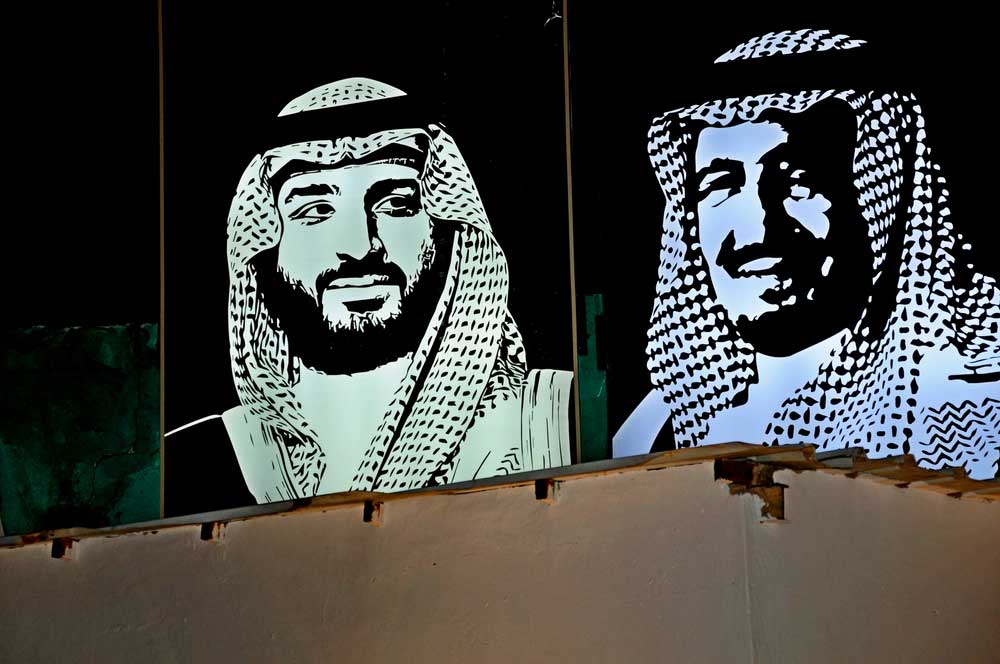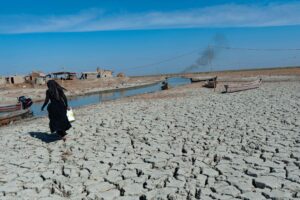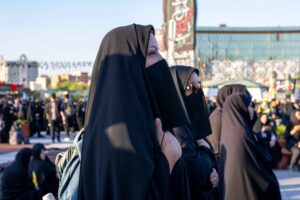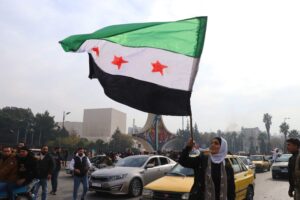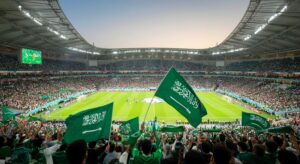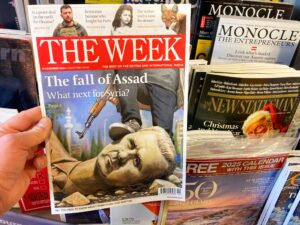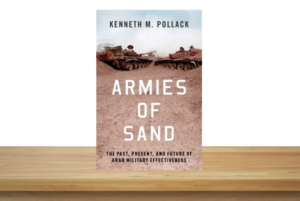For almost three centuries, three Saudi states have endured crisis, collapse, and rebirth through a unique political and socio-cultural system – a remarkable, if not miraculous, record. Since 1945, Saudi Arabia’s hydrocarbon wealth has made it a linchpin in global economic stability. Concurrently, the Kingdom has also experienced an almost seamless procession of threats and crises, many real and some imagined, which have spawned endless analyses, discussions, and prognostications about the Kingdom’s stability.[1] Arguably, the greatest post-war crisis was the removal of King Saud, and in 1964, the succession of King Feisal bin Abd-al-Aziz Al Saud to the throne. Feisal and his half-brothers established succession based on consensus and agnatic seniority, and using petroleum wealth, proved themselves to be surprisingly adept at modernization.[2] Since that time, this broad-based Al Saud system largely avoided succession controversies and presented a united front to internal and external threats. The current king, Salman bin Abd-al-Aziz Al Saud, is likely the last of this line, who will in all probability be succeeded by his son, Crown Prince Mohammed bin Salman Al Saud.
Given succession risks, most analysts assumed that one of the more senior grandsons with proven security and diplomatic experience would be the first monarch of the new generation, and in fact, Mohammed bin Nayef Al Saud, the Minister of the Interior (MOI) and son of Prince Nayef bin Abd-al-Aziz, briefly emerged as Crown Prince. Experienced in security affairs and close to senior Western defense and intelligence officials, he appeared to be the steady hand to manage the gradual transition of the Kingdom into the post-Feisal era with a new Al Saud consensus, succession, and modernization for Saudi Arabia. This was not to be. In 2015, King Salman appointed his oldest son, Mohammed bin Salman, Minister of Defense and head of economic development. In 2017, bin Salman, with his father’s blessings, outmaneuvered and replaced Mohammed bin Nayef as Crown Prince.[3]
King Salman’s role in the family had been important but was mostly played out in the background. He was a modernizer, who as mayor and governor transformed Riyadh from a small Nejdi city into a modern metropolis of almost eight million people, a stunning accomplishment. He served as the family mediator and “enforcer” running a system to discipline wayward princes. Hard working and disciplined, he had clear opinions on the relative merits, or lack thereof, of his brothers’ children, and in the final analysis, decided to elevate his own son to the position of Crown Prince. As Salman’s health deteriorated, his reign had increasingly become a de facto regency with the Crown Prince acting as ruler.[4] This “regency” has been anything but smooth and promises to get even more interesting as bin Salman pursues his declared agenda – namely creating a “Fourth Saudi State.” His goal is a “White Revolution” – a top-down transformation of the Al Saud family’s role in governance, the structure of the Saudi government, an economic revolution that would end the ‘rentier’ oil economy, and a social transformation that would open society and rein in impediments to progress, most prominently the Wahhabi religious establishment. Although his goals are relatively clear, the path is risky. Mark Twain’s dictum comes to mind, “History does not repeat itself, but it often rhymes.” In this case, the “rhyme” is a cautionary tale of overreach between 1965 and 1975 in Iran that culminated in anything but a “white revolution” in 1979.[5]
In what has been a broad-based family enterprise, can the Crown Prince establish a lasting single-threaded system based on personal clan and entourage?
The transition of rule from Feisal’s system to the grandsons of Ibn Saud was always going to be difficult and potentially controversial. However, given the circumstances of his rapid rise, Mohammed bin Salman now contends not only with questions about experience and judgment, but he has also split the Al Saud. Unforced errors have complicated these challenges and intensified the scrutiny. Nevertheless, these issues and challenges do not represent the real crux of the problem that the Crown Prince faces. The real question remains: can he create a new viable Al Saud and a government political structure that ensures the long-term stability for the Kingdom? In what has been a broad-based family enterprise, can the Crown Prince establish a lasting single-threaded system based on personal clan and entourage?
The ultimate resolution of the following five pointed questions will have greater reverberations for Mohammed bin Salman’s vision of future than any of the problems that he has heretofore faced. First, how does the Crown Prince’s goal of a Fourth Saudi State fit within the historical context? Second, what structural governmental changes are required to accommodate a ‘new order’ while simultaneously guaranteeing stability? Third, are the economic goals realistic? Fourth, what are the potential impacts of envisioned social and cultural changes on the overall stability of the state and society – is there a ‘Black Swan’? Finally, what are the likely problems and risks associated with execution of cascading modernization initiatives?
The Historical Context
In discussing a ‘Fourth Saudi State’, the collapses of the first two Saudi states and the near collapse of the Third Saudi State are instructive. The First Saudi State (1744–1818) collapsed because of overreach. Saudi expansion ran afoul of the Ottomans and their semi-autonomous governor in Cairo, Mohammed Ali Pasha, and to a lesser extent its policies challenged the British in the Arabian Gulf. As a result, the Al Saud’s imperial enemies destroyed them and their Gulf allies.[6] The Second Saudi State (1824–1891) imploded because Al Saud feuding allowed outside intervention.[7] The Third Saudi State and Saudi Arabia (1902–Present) rose and survived because Ibn Saud avoided the overreach and successfully managed internal Al Saud conflicts. He worked assiduously to establish internal Al Saud alliances and to co-opt other influential Arabian clans.[8] Nevertheless, Ibn Saud’s approach to succession almost destroyed his creation. It was King Feisal and his half-brothers, including King Salman, who created the contemporary state.
Replacing Feisal’s system is a monumentally difficult task. Bin Salman’s long game must be the recruitment and elevation of Al Saud allies and secondarily, of retainers, including the co-opting of opponents where possible.
As one Arab expert stated about Feisal’s system, “The security of the state lies in the fact that there is no real alternative to the Al Saud and no single-point-of-failure.”[9] With the end of Feisal’s system in sight, it was assumed that an agreement between a subset of the grandsons would result in broad Al Saud support for the new construct. Naked primogeniture was too great a risk. Now that has changed. Perhaps for dynastic reasons, King Salman chose the latter course. Given that decision, the Crown Prince requires the broadest possible support within the Al Saud. In addition, there must be a new cadre of loyal, competent bureaucrats, technocrats, and military officers to oversee state functions. A bulwark of loyal princes and capable state officials is critical, but it cannot be assembled overnight. Replacing Feisal’s system is a monumentally difficult task. Bin Salman’s long game must be the recruitment and elevation of Al Saud allies and secondarily, of retainers, including the co-opting of opponents where possible. Solitary ruler or not, the Crown Prince needs real Al Saud and government buy-in to succeed.
Mohammed bin Salman owns – for better or worse – the responsibility for his “White Revolution.” The Crown Prince apparently sees himself as the 21st century version of King Abd-al-Aziz, and he will be judged accordingly. This single-threaded approach has caused some experienced western analysts to argue that while he will likely become king, his Al Saud support base is too narrow for him to endure as the head of what is essentially a family enterprise – maybe and maybe not. Conceivably, he could become a 21st century version of a ‘solitary’ royal modernizer who radically realigns the royal structure and creates a completely ‘new’ Al Saud. Regardless, while change and royal ‘downsizing’ are necessary, the process should be deliberative focusing on which structures should transition, which should be modified, and which should be discarded. The new cannot be divorced from the context of the present or the past. Abrupt shifts are not conducive to stability. The brutal realpolitik is that the West is not invested in the survival of Saudi Arabia per se – it is invested in a stable source of energy for economic growth that provides support to regional Western allies. Saudi Arabia is merely viewed as the lowest risk means of achieving that. Instability in the Kingdom, real or perceived, is a problem. The United States absolutely supports Saudi Arabia as the low-risk option; however, should the “White Revolution” undermine stability, then without question, the policy calculations will be revisited. The Riyadh-Washington axis has worked well since the 1930s; while there have been disagreements, actions that have the potential to fundamentally upset the apple cart are not in the interests of either party. A King, no matter how absolute or far-sighted, is only as good as the apparatus that executes his policies – this is the schwerpunkt for the creation of Mohammed bin Salman’s ‘new’ Saudi Arabia and the primary nexus by which he will be judged.
The Economic Revolution
The third critical issue for Saudi Arabia is the economy. The Crown Prince’s economic programs and ambitions complicate what is already a witch’s brew of potential problems. Saudi Arabia, a rentier oil economy, produces nothing of real value except what is pumped out of the ground. Mohammed bin Salman knows that Saudi Arabia must, to the degree possible, escape its unsustainable rentier roots and develop a balanced functioning economy – hence his Vision 2030 and plans to rationalize the economy. Execution is the challenge. The austerity plan calls for marketizing subsidized elements of the economy including gasoline, electricity, and water thus adding significant pressure on the economy as a whole and the poorest Saudis in particular. Fearing unrest, increased security measures have been implemented as the “Saudi street” attempts to the new realities. In the short-term, such an approach is likely sustainable; in the long-term, it is unlikely to suffice.[10] In recognition of this problem, the regime is making what amounts to ‘cost of living’ payments to pacify the ‘Saudi street’ presenting another conundrum. Commodity prices are marketized, but the welfare state is forced to pay ‘subsidies’ to offset the subsidies removed because of marketization. Why? The regime recognizes that “welfare societies maintain a constant potential for mobilization that raises the stakes of reform.”[11]
This brings us to Vision 2030 and chasm between goals and what is likely achievable. To some degree 2030 has been undermined by self-inflicted wounds. The “anti-corruption campaign”, no matter its populist appeal, has targeted Saudi figures respected in the West. Arresting high visibility Saudi businessmen is not conducive to convincing outsiders to invest in the Kingdom. For example, the poorly conceived Khashoggi operation has brought sanctions and undermined confidence in rule of law undermining the willingness of Western governments and business figures to participate. Much of the progress made with progressive U.S. business moguls during his U.S. tour was undone by the assassination — association with the Crown Prince is now a liability. Viewed as capricious and politically motivated, the policies, rogue or not, undermine confidence. Businesspeople and entrepreneurs are now for the most part only interested in selling to Saudi Arabia, not investing in it.[12]
In as little as three to five years, the perception of success or failure will have significant consequences for the Crown Prince’s reputation.
Increasingly, Vision 2030 and its attendant “Davos in the Desert” conferences are increasingly viewed as publicity over substance.[13] The goals appear disconnected from realities on the ground and skepticism persists.[14] The Saudi economy needs modernization, but the peripatetic “boosterism” and over-the-top pronouncements are counterproductive. Brick by brick growth and the deliberate creation of a real workforce backed by best business practices, rule of law, and transparency have a better chance of yielding long-term results. From the standpoint of credibility, betting on the success of Vision 2030, coupled with marketization of the economy and attracting real foreign investment, is risky. In as little as three to five years, the perception of success or failure will have significant consequences for the Crown Prince’s reputation. At this point, a flexible, well-thought-out plan to tout the successes, rationalize failures, and bring expectations more into line with likely outcomes, might be in order.
Revolutionizing Saudi Society
The fourth major issue for modernization is the stress the “White Revolution” is placing on Saudi Arabia’s socio-cultural fabric. Population growth, societal imbalances, a deeply conservative society, and the influence of the Wahhabi religious establishment have contributed to stagnation. Historically, the complex relationships between these social and cultural issues made tampering with them so perilous that the Saudi government addressed them only tangentially. In this regard, the Crown Prince’s views on society and Islam are interesting.
Regarding Wahhabi Islam, or more precisely the Saudi version of the Wahhabi reform movement within the Hanbali School of Sunni Islam, the historical relationship between the Al Saud and the Wahhabi movement has been existential. The Crown Prince has stated that Saudi Islam became radically conservative only after the events of 1979 – the takeover at Grand Mosque in Mecca and the Iranian Revolution. These events frightened the political leadership into acquiescing to radical clerics who did not reflect historical Saudi Islam.[15] Bin Salman stated, “We are simply reverting to what we followed – a moderate Islam open to the world and all religions. 70% of the Saudis are younger than 30, honestly we won’t waste 30 years of our life combating extremist thoughts, we will destroy them now and immediately.”[16] Anyone that witnessed 1979 knows that its upheaval in the Islamic world was real – a complex crisis that Riyadh had to address.
In the Crown Prince’s defense, this interpretation of 1979 is currently in vogue among journalists, some scholars, and various officials. They fail to grasp that in times of social and economic stress, literalist religions often provide the igniters or vehicles for societal explosions particularly in the Islamic world. In the Middle East, virtually every revolt against centralized authority since 1979 — Iran, Iraq, Syria, Yemen, and Algeria, etc. – political, economic, and social discontent has been expressed in Islamic terms. Hanbali/Wahhabi arguments are particularly problematic because they tend to be driven as much by grassroot adherents than a formal clergy. Al Qaeda and ISIS are good examples. First and perhaps foremost, Wahhabi Islam has furnished the ideological underpinning that brought the Saudi State into being and allowed the Al Saud to regenerate the state twice after catastrophic collapses. The ideological motivation of the Ikhwan, the mailed fist of the Al Saud, was anything but ‘moderate.’ In fact, one might question whether King Abd-al-Aziz himself would have prevailed against the British-supported Hashemites of the Hejaz without fanatical religious militancy of the Ikhwan and, of course, plunder.[17] In addition, without the legitimacy conferred by Wahhabi revivalism, it is questionable whether the Saudi State could have regenerated itself after the first two collapses or sustained the Third State.[18]
The “White Revolution” has all the earmarks of “innovation” to make it a lightning rod for Hanbali ire. In its extreme form, this fundamentalist literalism is exemplified by the rise of Al Qaeda and the Islamic State – both substantial threats to the Al Saud.
There is another more explicit cautionary note that runs even deeper. The Hanbali School of Sunni Islam was founded in reaction to political, economic, and social distress. The founder and subsequent revivalist leaders blamed the problems of their day on straying from “true” path of Islam and its “pious ancestors” – al-salaf al-salih.[19] Hanbali fundamentalist literalism is tailor-made to resist “innovation.”[20] The “White Revolution” has all the earmarks of “innovation” to make it a lightning rod for Hanbali ire. In its extreme form, this fundamentalist literalism is exemplified by the rise of Al Qaeda and the Islamic State – both substantial threats to the Al Saud. When viewed in the context of political, economic, and socio-cultural ferment, the risks to Saudi stability constitute a significant issue.[21]
Resistance to the “White Revolution” and rising expectations could produce a perfect storm. Modernization and marketization, moving too quickly from oil-based welfare, also has serious implications. Coupled with any perceived failures in huge projects like Vision 2030, it could alienate significant segments of the population.[22] Populist support is fickle. The unsettling effect of too much change, directly identified with the regime in a society that is already in flux, is problematic. When tied to an increasingly “single threaded” political structure, it could conceivably threaten both the Crown Prince’s position and even the state itself. A more deliberate approach and a narrower set of clearly achievable objectives would provide a surer path to a new political and economic structure. With what fundamentalists will view as an assault on Wahhabi Islam, including women’s rights and other social issues, the conservative clerics will quickly attribute any perceived failures and injustice as stemming from departures from the ‘true’ Islam and theological ‘innovation.’ This is a probability genetically coded into Hanbali Islam, ergo much of the ‘Saudi street’ as well. It has the potential to become a potent mix of political, economic, and socio-cultural problems. The removal of the ‘illusion’ of Islamic unity and equality could very well let the genie of class conflict out of the proverbial bottle.
Challenging Path Forward
The final discussion focuses on the risk versus reward prioritization of goals. Mohammed bin Salman has a relatively clear, if theoretical, grasp, of where Saudi Arabia needs to go. At a macro-level, the items in his agenda have long been topics of discussion for modernizers. A new streamlined Al Saud political structure is required as is a modified sustainable structure for succession. In theory, the rentier oil economy must give way to marketization, real Saudization of the labour force, and self-sustainability for growth. Social and cultural changes are required to fully utilize the Kingdom’s human resources, including women in the workforce, and to curtail the meddling of religious authorities. The challenge is bridging the gap between theory and implementation. What does this mean for Mohammed bin Salman and Saudi Arabia?
The simultaneous revolutionary top-down attempt to restructure the political, economic, and socio-cultural structure of the Kingdom is unprecedented – for a reason. Revolutions promise much but are risky propositions with uncertain outcomes. In fact, they often as not consume their own, which explains the skepticism of some analysts about the durability of Mohammed bin Salman’s rule.[23] Other knowledgeable observers offer the somewhat disingenuous argument that there is no real alternative to the Crown Prince – there are alternatives to everything.[24] In an unsettled situation, overreach is dangerous. Were the Crown Prince to narrow the scope of his modernization efforts and focus on broadening his support within the Al Saud while building a professional, loyal cadre of bureaucrats and technocrats, then he would not only solidify his place in the royal family but also enhance his control of the government apparatus. Until the Al Saud and government restructuring is firmly in place, reliance on a narrow entourage and the al-Sayf al-Ajrab protection force (Praetorian Guard) can be a double-edged sword – Sejanus and Abd-al-Karim al-Qasim come to mind.[25] Analysts also ponder whether the Crown Prince’s “opposition” poses a real threat to the regime or if it stems from some self-fulfilling paranoia. Both scenarios point to instability. Highlighting broad-based Al Saud support and smooth government function would allay these concerns about stability and likely boost international support.
The economic and social implications of his policies could have unintended revolutionary consequences. On the ‘street’, the Crown Prince needs at least the perception of success. The simultaneous projects and changes are causing conflicts and putting serious stresses on the society. Economic marketization and mega-projects could have unforeseen and unanticipated negative repercussions, particularly when paired with attempts to rein in the heretofore powerful religious establishment. In Saudi Arabia, economic and social discontent have a high likelihood of finding expression in religious terms and quasi-religious political movements. Real social and economic change spans decades, not ten years. As a result, more deliberate approaches to fundamental change tend to yield better prospects for success while at the same time reducing the tensions that bring instability.
Crown Prince Mohammed bin Salman has transitioned from an unknown prince to the heir apparent in just five years, a stunning combination of initiative and good luck. Nevertheless, he has had a rough start on a very difficult task. To succeed, he cannot afford self-inflicted wounds. Problems aside, there are indications of more sophistication and deliberate policy moves. It is still unclear what the future holds beyond the likelihood that he will be the next King of Saudi Arabia. The Crown Prince is correct in stating that the Kingdom must change, and his “White Revolution” is a vision for that change; nevertheless, there are some overriding priorities. Over the next five years, his ability to establish a broad-based, stable political and government structure will likely determine his level of success in the economic, social, and cultural realm.
[1] Robert Lacy, The Kingdom: Arabia and the House of Saud (New York: Harcourt, Brace and Jovanovich, Inc., 1981): 310–315. In the 1950s, King Saud established an alliance of sorts with Nasser. Nasser wanted and received Saudi funding for his subversion campaigns throughout the region even while Radio Cairo, the “Voice of the Arab World”, attacked the Al Saud for its “extravagance and corruption.” The issue that really got Riyadh’s attention was Nasser’s 1956 visit to Dhahran and Riyadh. Lacey discusses the impact of Nasser’s visit and the humiliation of the Saudi royal family; “There could be no face-saving rationalizations of the hysteria that swamped the Egyptian leader when he arrived. … Riyadh had never seen anything like it. No member of the house of Saud had ever inspired such spontaneous displays of passion.” Concern about King Saud’s fitness to rule and the Nasserist threat would spark the greatest crisis since the Civil War with the Ikhwan in the 1920s and eventually result in his ouster. The list of other crises is long but the high points are: the Nasserist threat and the succession induced instability in the 1950s and 1960s; the Yom Kippur War and the oil crises of the 1970s; the rise of Khomeinism in the 1979; the First Gulf War between Iraq and Iran in the 1980s; the threat of Saddamist Iraq; and the rise of Al Qaeda in the 1990s; and finally the litany of issues and crises following 9/11.
[2] “Discussion at the 406th Meeting of the NSC, 13 May 1959,” Dwight David Eisenhower Library (PPDDE, AWF, NSC Series, Box 11): 2. “Faisal (sic) appears to be the only member of the royal family who understands modern processes of government. The resumption of power by the King [Saud] might be disastrous to Saudi Arabia.”
[3] According to Bruce Reidel at the Brookings Institute in Washington, “The international community should now take up another cause and demand the release from prison of former Crown Prince Mohammed bin Nayef, who is being held not because of any crime he committed but because he presents a problem for the current crown prince, Mohammed bin Salman. Mohammed bin Nayef saved the lives of dozens if not hundreds of Americans and defeated al-Qaida in its birthplace.” “The Case of Saudi Arabia’s Mohammed bin Nayef,” The Brookings Institute (12 February 2021): https://www.brookings.edu/blog/order-from-chaos/2021/02 /12/the-case-of-saudi-arabias-mohammed-bin-nayef/.
[4] Keven Sullivan, “Before he was king, Salman was the family disciplinarian who put princes behind bars,” The Washington Post (23 January 2015): https://www.washingtonpost.com/world/salman-is-known-for- mediating-saudi-royal-disputes/2015/01/22/1bc8dc1a-a2b0-11e4-b146-577832eafcb4_story.html.
[5] With regard to that other ‘White Revolution.’ Pahlavi Iran collapsed for a multitude of reasons but at its root was the narrow base of the regime and the drip-drip-drip of mistakes – it was not so much a question of if but rather when it was going to happen. The Shah’s grandstanding made him the focal point for failures. Early assessments of the Shah’s ability to fundamentally reform Iran rang true to the very end of his regime. “It would be a mistake to think that this Government, unless it drastically changes its character, can or will provide the firm leadership for the successful execution of important reforms – political, economic or administrative. At one time it appeared that the Shah was moving directly toward the establishment of a clanking military dictatorship which would soak the rich and attempt to break up the land-owning aristocracy in order to win the favor of the ‘people’. But from all reports and from a study of his moves, the Shah does not have the capacity to make a sustained effort in the direction of basic social reforms, and an attempt by him to embark on such a program would probably have chaotic results.” “Dispatch from US Embassy Tehran Seldan Chaplin to WDC, Assessment of the Shah’s Government, 21 April 1956,” National Archives College Park Maryland (GRDOS – 59, CDF 55-59, NEA, 788.00/4-2156 Box 3809): 1-3. In the 1960s, the Shah’s “White Revolution” challenged the traditional foundations of Iranian society. His media campaign also made him the focal point for the success or failure of his programs and by the mid-1970s, he had hollowed his support – the regime was “single-threaded” and ripe for revolution. In addition, his ego-driven mega-projects fueled by the post-1973 oil price surge left much of the population behind while causing significant economic hardship and social displacement. In effect, the more he attempted to modernize – the more overheated the economy became. Finally in December 1976, the U.S. and Saudi Arabia combined to undermine oil prices and wreck Iran’s overextended budget and unwittingly made a significant contribution to destabilizing the regime. The Shah’s regime collapsed two years later. Andrew Scott Cooper, “Showdown at Doha: The Secret Oil Deal That Helped Sink the Shah of Iran,” Middle East Journal (Autumn 2008): 571. By the 1970s, the Shah’s survival rested solely on the loyalty and efficiency of the military and his security services. By 1973, he had the windfall of exploding oil revenues to further finance his efforts. His goals were to solidify populist political base with the “Iranian street” by controlling the landed aristocracy and empowering a populist political movement, secure the dynastic ambitions of his family, use oil revenue to revolutionize the economy, execute megaprojects to demonstrate that Iran had arrived as a world power, create a loyal military machine second to none in the region, and finally revolutionize the society in terms of women’s rights, working class opportunities, and reining in the Shi’a clerics. First and perhaps foremost, the Shah, for reasons including ego and impatience, made himself the single point of focus for his “revolution.” His political, economic, and social efforts often produced conflict, confusion, and contradictory results. For example, his effort to broaden the regime through a populist political program undermined his support among the wealthy classes. His dynastic plans were based on a very narrow, single-threaded approach that left no margin for error and his selection of government officials tended to favor sycophancy over competence. The mega projects distorted the economy and when the Kingdom undermined oil prices the shocks wrecked his projects and stability. All of these issues coupled with his social revolution strained the fabric of Iranian society and opened the door to the Shi’a clerics and Islamic fundamentalists who detested what they viewed as his departure from the ‘true’ Islam. Too much change in too short a time created the stresses on the entire Pahlavi edifice and brought it crashing down. Was the collapse inevitable? No, but the overreach in almost every sector of the Iranian state, economy, and society created the instability that made it possible. “CIA: Office of Current Intelligence — Report on Counter-Insurgency in Iran, 23 April 1963,” John F Kennedy Library (PPJFK, NSF, Komer Series, Box 116A): 1. See also “CIA SNIE No. 34-63, The Iranian Situation, 10 April 1963,” JFKL (PPJFK, JSF, Meetings and Memos Series, Box 315): 3; “Memorandum from Komer to Bundy, 30 April 1963,” JFKL (PPJFK, NSF, Country Files, Iran, Box 116A): 1; and “Memorandum from Hansen to Komer, 7 May 1963,” JFKL (PPJFK, NSF, Komer Series, Box 424): 1.
[6] Arnold T. Wilson, The Persian Gulf: An Historical Sketch from the Earliest Times to the Beginning of the Twentieth Century (London: George Allen & Unwin, Led., 1954): 122-127. The Saudi occupation of the Hejaz and the Holy Cities of Mecca and Medina was simply too much to countenance. In 1818, Ibrahim Pasha (1789–1848), Mohammed Ali’s son and most competent military commander, culminated a ten-year campaign by invading the Nejd and capturing Emir Abdullah bin Saud (r. 1814–1818) and sending him to Istanbul for public execution. At the same time, the British launched a campaign in the Gulf and by 1819, subdued the Saudi allies in Ras al-Khaymah and Sharja imposing a new “Trucial” arrangement on that region. For subsequent, Saudi states these events became a cautionary tale not to be repeated. King Abd-al-Aziz and later King Saud attempted to reassert Saudi claims to large areas of what is now the United Arab Emirates (Buraimi Crisis) in the 1950s because he believed he had U.S. backing. The British militarily ejected the Saudi expedition from the area. Saud learned that U.S. support did not mean unconditional U.S. backing for potentially destabilizing or embarrassing adventures in the region – a lesson taken to heart in Riyadh until recently.
[7] J.B. Kelly, Britain and the Persian Gulf, 1795–1880 (Oxford: Clarendon Press, 1968): 228–230, 246.
[8] Roby C. Barrett, The Gulf and the Struggle for Hegemony: Arabs, Iranians, and the West in Conflict (Washington, D.C.: The Middle East Institute, 2016): 63-64.
[9] A senior Arab analyst with close ties to the Al Saud.
[10] Redouane Sarrakh, Suresh Renukappa, Subashini Suresh and Sabah Mushatat “The Impact of subsidy reform on the kingdom of Saudi Arabia’s economy and carbon emissions,” Energy Strategy Reviews (March 2020): https://www.sciencedirect.com/science/article/pii/S2211467X20300195. “The New Saudi Arabia Where Taxes Triple and Benefits Get Cut,” Baker Institute (13 May 2020): https://www.forbes.com/sites/thebakersinstitute/2020/05/13/the-new-saudi-arabia-where-taxes-triple-and- benefits-get-cut/?sh=2b6060682a22.
[11] Jim Crane, Walid Matar, and Francisco Monaldi, “Fossil Fuel Subsidy Reform Since the Pittsburgh G20: A Lost Decade?” Center for Energy Studies – the Baker Institute, Rice University (October 2020): 7: https://www.bakerinstitute.org/media/files/research-document/4a872e65/ces-pub-fuelsubsidy-100620.pdf. “Subsidies…often persist long after their distorting effects are clear, and policymakers understand that the damage outweighs any residual benefit. That ‘stickiness’ is due to the difficulty of removal. Loss of benefits has long been understood as a catalyst for unrest regardless of governance type. Provision of subsidies by the state unintentionally creates solidarity among beneficiaries. These recipients can—and sometimes do—rise up and threaten political leadership when their interests are jeopardized. Therefore, welfare societies maintain a constant potential for mobilization that raises the stakes of reform.” These risks as stated in this article, in and of themselves, are formidable, but in the case of Saudi Arabia, the additional risks associated with socio-cultural reforms—the crackdown on salafi Islam, women’s rights, lifting of social strictures—should give the regime pause for thought.
[12] There is a big difference between doing business with the Kingdom and investing real capital. It is difficult to conceive that under the present circumstances Western firms would be willing to invest in any significant way. Transactional contracting is something else, but investing is simply too much risk for too little potential return. In the best of times, the market for products is simply too small and the labor culture too primitive. The effects of 50 years plus of a welfare state based on a rentier oil economy simply cannot be eliminated in less than a generation with a few projects and media announcements. It will take decades. Donna Abu Nasr, “Saudi Crown Prince’s Past Makes His Vision a Tough Sell Abroad: His plan to open up the economy to the world may be jeopardized by this reputation,” Bloomberg Businessweek, (7 April 2021): (https://www.bloomberg.com/news/articles/2021-04-08/mohammed-bin-salman-s-reputation -taints-plan-to- open-saudi-arabia-s-economy.
[13] Isaac Stanely-Becker, “’Davos in the Desert’: Once a sign of Saudi Arabia’s clout, the spectacle now highlights its isolation,” The Washington Post (18 October 2018): https://www.washingtonpost.com/news/-morning-mix/wp/2018/10/18/davos-in-the-desert-once-a-sign-of-saudi-arabias-clout-the-spectacle-now-highlights-its-isolation/.
[14] Faisal al Nasser, “Everything we know about Neom, a mega-city project in Saudi Arabia with plans for flying cares and robot dinosaurs,” Business Insider (23 September 2019): https://www.business-insider. com/neom-what-we-know-saudi-arabia-500bn-mega-city-2019-9#neom-is-part-of-vision-2030-an-ambi-tious-plan-to-revolutionize-saudi-society-reduce-dependence-on-oil-and-make-the-country-a-technology-hub-3.
[15] 1979 was a revolutionary year in many respects, but to view it out of context is misleading, particularly with regard to Saudi Arabia. 1979 provoked what should be viewed as a renaissance in Hanbali/Wahhabi Islam to counter the “social-revolutionary agenda” and anti-Kingship teaching of the Ayatollah Khomeini. The Al Saud responded with their own Wahhabi revivalism “emphasizing the country’s dominant religion, the conservative Wahhabism, like never before.” (This is an overstatement – it had happened before, not just in the post-1945 era.) “The model was, and remains, successful: the strict Wahhabi teachings have found followers throughout the Muslim world, with the vast majority of Sunni fundamentalists taking the path of Wahhabism. What the Saudis didn’t predict back then was that the influence of the ultra-conservative Wahhabi Islam would also pave the way for jihadism, and Islamist terrorism.” “1979: A Fateful Year for the Middle East,” DW.com, https://www.dw.com/en/1979-a-fateful-year-for-the-middle-east/a-47468893.
[16] Martin Chulov, “I will return Saudi Arabia to moderate Islam, says crown prince,” The Guardian (24 October 2017): https://www.theguardian.com/world/2017/oct/24/i-will-return-saudi-arabia-moderate-islam- crown-prince. See also, Kamal Abderrahmani, “Mohammed bin Salman attempts to reform Islam”, AsiaNews.it (8 May 2021): http://www.asianews.it/news-en/Mohammed-Bin-Salman-attempts-to-reform-Islam-53085.html.
[17] As the Times correspondent pointed out after the Hashemite defeat at Turaba in May 1919, “We shall look like fools all over the East if our puppet is knocked off his perch as easily as this.” See David Fromkin, A Peace to End All Peace: Creating the Modern Middle East, 1914–1922, (New York: Henry Holt and Company, 1989): 426. The Ikhwan almost destroyed the Kingdom in the late 1920s and were only contained by Ibn Saud with British assistance. See Nadav Safran, Saudi Arabia: The Ceaseless Quest for Security (Ithaca: Cornell University Press, 1988): 49–50, and David Howarth, The Desert King Ibn Saud and his Arabia (New York: McGraw-Hill Book Company, 1964): 168.
[18] “The successes and the resiliency of all three states cannot be separated from the critical leadership provided by the Al Saud family and their embrace of the ideological glue provided by the reformist version of Islam propagated by Muhammad Abd-al-Wahhab.” The issue with Mohammed bin Salman’s ‘revolution’ is preservation of the ‘glue’ and the legitimacy that it provides. Roby C. Barrett, The Gulf and the Struggle for Hegemony: Arabs, Iranians, and the West in Conflict (Washington, D.C.: The Middle East Institute, 2016): 133.
[19] Ahmad bin Hanbal (780–855) and the Hanbali school of Islam took the Shafai reliance on hadith literalism. It allows interpretation or reasoning with regard to Quranic interpretation only when the hadith or consensus is “unavailable.” To stray from literalism is the sin of “innovation.” The movement was a revolt against the infusion of Greek philosophy into Islam thought. In its second iteration, Taqi al-Din Ahmad ibn Taymiyya (1263–1326) revived the almost dormant Hanbali interpretation arguing that the Mongol invasion was God’s judgment for straying from the “true” path of Islam and its “pious ancestors” – al-salaf al-salih. See L.W. Adamec, Islam: A Historical Composition (Stroud, U.K.: Tempus Publishing Limited, 2007): 235. In the third revival, Mohammed ibn Abd-al-Wahhab (1703–1792) launched a crusade against the dominant Ottoman Hanifa school, sufism, and Shi’ism and any form of non-literalist Islam. Ibn Abd-al-Wahab saw the fraying power of the Ottomans and Safavids as punishment for leaving the literalism of “true” Islam. In each case, the Hanbali revival was in reaction to political, economic, and/or socio-cultural stresses and upheaval. See Natana J. Delong-Has, Wahhabi Islam: From Revival and Reform to Global Jihad (London: Oxford University Press, 2004): 18.
[20] L.W. Adamec, Islam: A Historical Composition (Stroud, U.K.: Tempus Publishing Limited, 2007): 235.
[21] “The politics of conflict are expressed using the verbiage of Islam, but at their core, they derive from historical political, economic, and social differences.” At the same time, the Islamic verbiage applied to resistance adds credibility and provides ideological justification. Roby Barrett, Islam: Ideology and Conflict (Tampa, FL: The Joint Special Operations Press Report 14–8 December 2014): 1.
[22] While muddled by an abbreviated polemic on “freedom”, McElroy is correct in arguing that the revolution of rising expectations, particularly if unmet, can be more potent threat than a revolution of the downtrodden. Wendy McElroy, “The Revolution of Rising Expectations,” The Future of Freedom Foundation (1 May 2016): https://www.fff.org/explore-freedom/article/revolution-rising-expectations/. This view is reflected in Georges Lefebvre’s The Coming of the French Revolution (Princeton: Princeton University Press, 1971): 3. Lefebvre quotes Francois-Rene de Chateaubriand saying, “The patricians began the revolution and the plebians finished it.” Lefebvre describes a revolution in “acts” driven by social classes. Crane Brinton in Anatomy of a Revolution (New York: Random House, 1965): 4 discusses the multiplicity of meanings describing the general popular meaning as “great overturns in previously stable political societies” and drawing a line between “revolution” and coup-de-tat. In that respect, the Iranian Revolution of 1979 was largely the latter. It displaced authoritarianism with more authoritarianism and created a new aristocracy to replace the old. While a complex topic, revolution is the “overturn” of a previously stable political system. It does tend to happen in stages. It is often begun by classes of people who are unable to control the direction and are consumed by it. Attempts to fundamentally revolutionize established societies in controlled “White Revolutions” or otherwise, tend to get out of hand. The Crown Prince is correct about the need for change, but Mark Twain is right about “rhyme” of history – Saudi Arabia is always interesting and the next five years should be particularly so.
[23] Those that believe that Mohammed bin Salman’s durability is in question believe that “cascading failures” like in Yemen, the Qatar embargo, the failure of Vision 2030 to meet its goals, the oil pricing war with Russia, and the coming yawning gap between the regime promises and reality will eventually undermine his rule. Given the events of the last six years, those arguing that overreach will ultimately undermine the Crown Prince at some point after he becomes King have a solid systematically constructed argument that bears study. Those seeing a decades long rule likely have a far too narrow view of the complexities of modernization within the Saudi context. They are deaf to the “rhyme” and appear to have largely settled on this scenario because they simply cannot conceive of another. They seem unaware that up until 1978, who would have even entertained the idea of a collapse in Pahlavi Iran, particularly one led by the clerics.
[24] There are too many examples of “alternatives” to the Hashemites in the Hejaz and Iraq, to Ali Abdullah Salih in Yemen, to Muamar Qadhafi in Libya, to the Shah in Iran, etc. Certainly, in the West, the alternatives may be unpalatable or undesirable, but they are there.
[25] “Crown Prince creates his own army of 5,000 soldiers,” TAG news (1 November 2018): https://kaztag. Info/en/news/saudi-crown-prince-creates-his-own-army-of-5000-soldiers.


